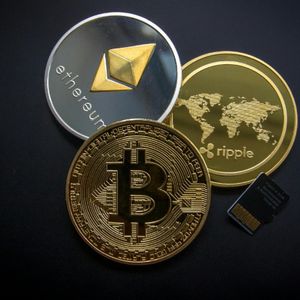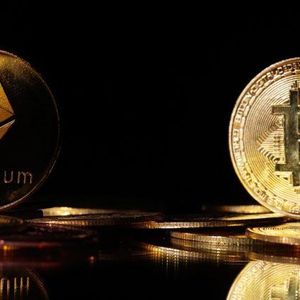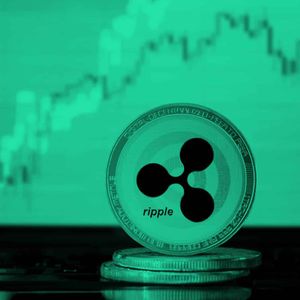Solana’s position in the crypto market is gaining fresh attention as institutional engagement deepens and new ETF applications continue to emerge. This week, asset manager Invesco became the ninth firm to file for a spot Solana ETF, aiming to track the cryptocurrency’s market performance alongside several major competitors. At the same time, analysts and investors are pointing to Solana’s expanding potential beyond speculative use cases, with growing support for its role in the long-term development of tokenized capital markets. Invesco Joins Race for Solana ETFs, Paving Way for a Possible Altcoin ETF Summer Asset manager Invesco has filed for a Solana-based exchange-traded fund (ETF) in partnership with Galaxy Digital. The filing makes Invesco the ninth contender seeking regulatory approval to launch a spot Solana ETF, reflecting a growing appetite to expand crypto ETF offerings beyond Bitcoin and Ethereum. The proposed Invesco Galaxy Solana ETF would directly hold SOL, the native token of the Solana blockchain, which currently ranks as the sixth-largest cryptocurrency by market capitalization, trading at approximately $145.81. The filing outlines that the ETF aims to mirror the spot price of Solana and would be listed on the Cboe BZX Exchange under the ticker “QSOL.” With the explosive success of spot Bitcoin ETFs following their long-awaited launch in early 2024 — and a more modest reception for Ethereum ETFs later that year — asset managers are now probing the market’s appetite for altcoin-based funds. Solana, known for its high-speed and low-cost blockchain network, has emerged as the leading candidate for this next wave of ETF innovation. Joining heavyweights like VanEck, Grayscale, Bitwise, Fidelity, Franklin Templeton, and 21Shares, Invesco’s entry into the fray signals growing institutional confidence in Solana's long-term value proposition. These firms are all betting that the demand for Solana exposure — especially via regulated and accessible investment vehicles — is substantial enough to warrant SEC approval. According to Bloomberg ETF analyst James Seyffart, the Securities and Exchange Commission could approve Solana ETF applications as early as July, well ahead of the final decision deadline of Oct. 10. Seyffart’s analysis, backed by Bloomberg senior ETF strategist Eric Balchunas, assigns a 90% probability to approval, suggesting that momentum behind these filings is rapidly gaining traction. “Get ready for a potential altcoin ETF summer with Solana likely leading the way,” Balchunas noted. Coinbase Custody and Staking Provisions A notable feature of the Invesco Galaxy Solana ETF is its custodial and staking structure. The fund will use Coinbase Custody to securely hold its underlying SOL assets. Furthermore, the filing reveals that the ETF may occasionally stake a portion of its assets through “trusted staking providers.” Staking — locking up tokens to help secure the network in exchange for yield — has become an increasingly popular strategy among crypto investors seeking passive returns. The ETF would receive additional SOL tokens as staking rewards, which the filing states could be treated as taxable income to the trust. This staking provision aligns with similar updates made by competing Solana ETF applicants earlier this month. By integrating staking, these ETFs aim to enhance yield potential for investors, a move that could make them more attractive relative to traditional crypto funds. The wave of Solana ETF filings comes at a time of renewed optimism in the US crypto sector. The Trump administration has signaled its intent to reduce regulatory barriers for digital assets, a shift that has already catalyzed billions of dollars in institutional Bitcoin investment and sent prices to new all-time highs. This deregulatory stance appears to have emboldened asset managers to move forward with ETF products that just months ago seemed politically and legally infeasible. The push for Solana ETFs mirrors the aggressive expansion of crypto integration into traditional finance, as public companies continue to raise capital for long-term digital asset holdings. Race to the Finish: Who Will Win the SOL ETF Game? The simultaneous nature of the nine filings suggests that, if approved, all Solana ETFs will launch concurrently — likely to avoid giving any single firm a first-mover advantage. The list of current bidders now includes: Invesco & Galaxy Digital Grayscale VanEck Bitwise Fidelity Franklin Templeton 21Shares Canary Capital While all of these issuers — except Canary — have already launched spot Bitcoin and Ether ETFs, Canary has stood out for its aggressive push to introduce ETFs tracking a broader range of altcoins. Whether the SEC will greenlight all applications remains to be seen, but analysts believe concurrent approval is the most probable scenario. A greenlight from regulators could mark a watershed moment not only for Solana but for altcoins more broadly. It would also validate Solana's increasing prominence in the decentralized finance (DeFi), non-fungible token (NFT), and Layer 1 blockchain sectors — areas where it has increasingly challenged Ethereum’s dominance. For institutional and retail investors alike, a regulated Solana ETF offers a safer, more convenient way to gain exposure without navigating the complexities of self-custody or crypto exchanges. If this wave of ETF approvals materializes, the summer of 2025 may be remembered as the beginning of the “Altcoin ETF Era,” with Solana leading the charge. Solana Dips Slightly After Session Highs as Syncracy Capital’s Watkins Renews Long-Term Bullish Outlook Solana’s native token, SOL, saw a minor pullback on Tuesday — after briefly touching $147.73 earlier in the session. The dip came amid heightened trading volume and renewed commentary from Syncracy Capital Co-Founder Ryan Watkins, whose latest remarks are reinforcing bullish narratives around Solana’s role in the future of the crypto economy. The session’s high and subsequent retracement illustrate a common pattern among top-performing crypto assets that are seeing both institutional interest and macro-level validation. In Solana’s case, those tailwinds appear to be growing stronger despite near-term price softness. Watkins: Solana to Lead the “Tokenization of Everything” The latest momentum in market discussion came after Ryan Watkins revisited his bold May forecast, which positioned the competition between Solana and Hyperliquid as the defining contest in the next phase of the blockchain economy. In a new post on X (formerly Twitter) published June 25, Watkins asserted that Solana now appears poised to lead the “tokenization of everything” — a phrase increasingly associated with the digitization of real-world assets, financial instruments, and equities on permissionless blockchains. Watkins’s thesis contrasts Solana’s future with that of Hyperliquid, another high-performance chain, which he sees dominating the perpetual futures space. His bifurcated vision underscores two key narratives gaining traction in the broader digital asset landscape: the migration of capital markets onto public blockchains and the institutional appetite for decentralized derivatives. Back in May, Watkins speculated that the winner of the Solana-Hyperliquid race could eventually mature into a platform worth between $100 billion and $500 billion, depending on how successfully it absorbs market share from both traditional finance and competing Layer-1 networks. This bold projection now carries added weight given recent developments: record-breaking CME Futures volume for SOL and the sustained influx of institutional investors seeking exposure to alternative Layer-1 blockchains. Watkins’s remarks are seen as a reinforcement of the narrative that Solana is no longer just a high-speed alternative to Ethereum, but a core player in a future financial system increasingly governed by decentralized protocols. CME Futures Volume Signals Institutional Momentum Perhaps most telling of Solana’s increasing institutional legitimacy is the record futures activity on the Chicago Mercantile Exchange (CME). The open interest in SOL futures recently hit a high of 1.75 million contracts, reflecting a significant uptick in participation from sophisticated investors and hedge funds. This level of volume places SOL alongside Ethereum and Bitcoin as one of the few cryptocurrencies with strong, sustained institutional engagement. Market observers have noted that this surge in futures trading activity is likely to underpin price stability and may even lead to further price discovery, especially if coupled with a favorable macro environment and supportive regulatory developments. Despite the brief cooldown from session highs, technical indicators remain favorable for Solana . The $144–$145 zone is holding as short-term support, while bulls continue eyeing the $148 to $150 range as the next major resistance band. Traders are also watching for a breakout past the psychological $150 level, which could confirm a broader bullish continuation pattern that’s been forming since early June. Solana’s Position in the Tokenization Race Solana’s efficient transaction processing, low fees, and growing developer ecosystem make it an ideal candidate for powering large-scale tokenization of assets. From stablecoins to real-world assets like stocks and real estate, multiple projects are already experimenting with bringing financial instruments onchain using Solana’s infrastructure. This is further bolstered by the growing interest from traditional financial institutions and asset managers. With major players like Franklin Templeton already issuing tokenized funds on Solana and a possible Solana ETF approval on the horizon, the network’s institutional footprint is expected to expand significantly.


















